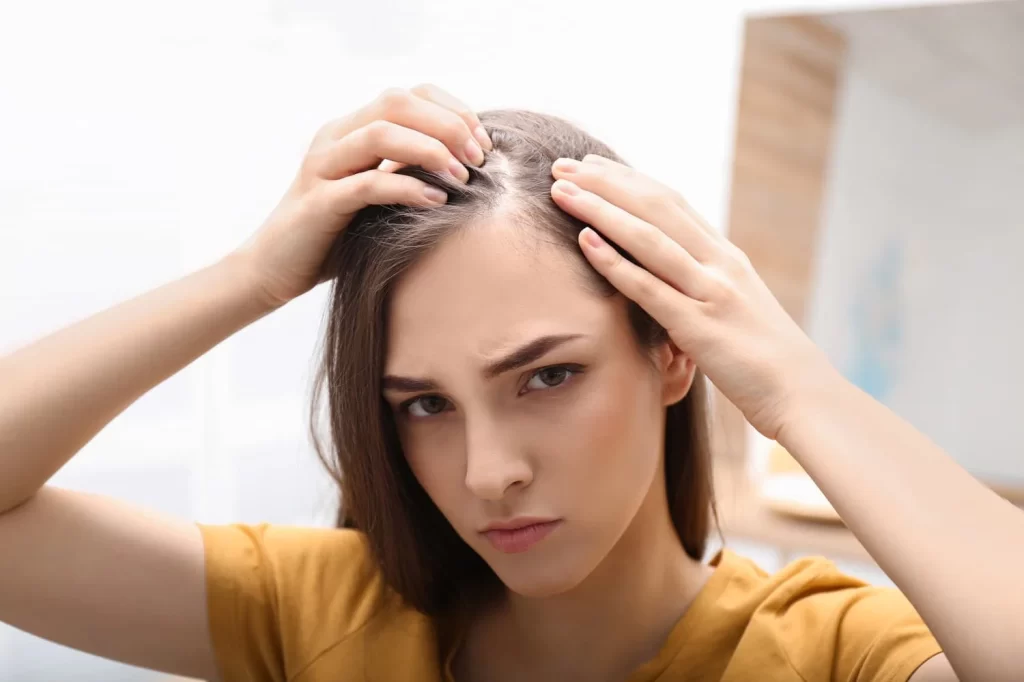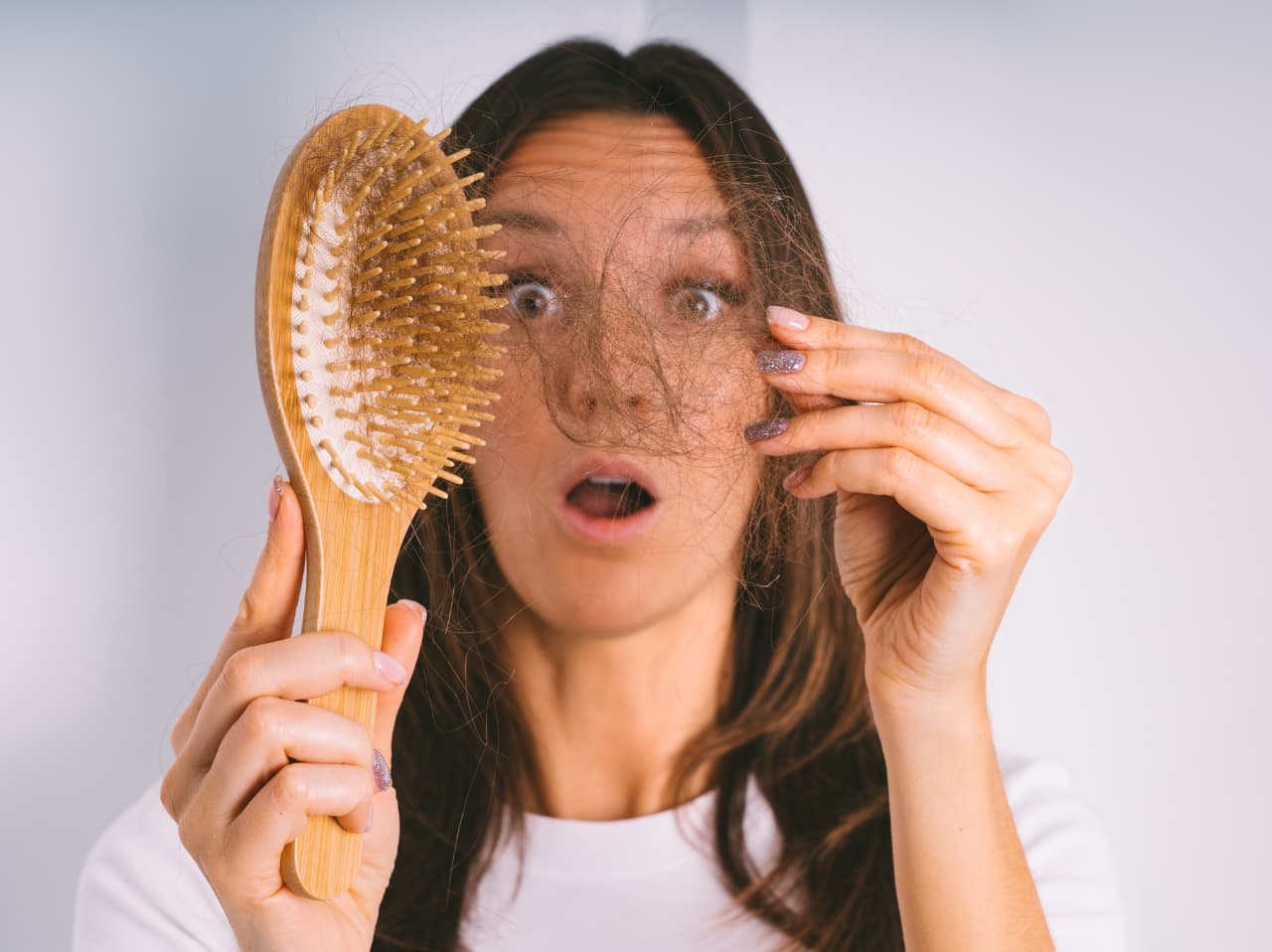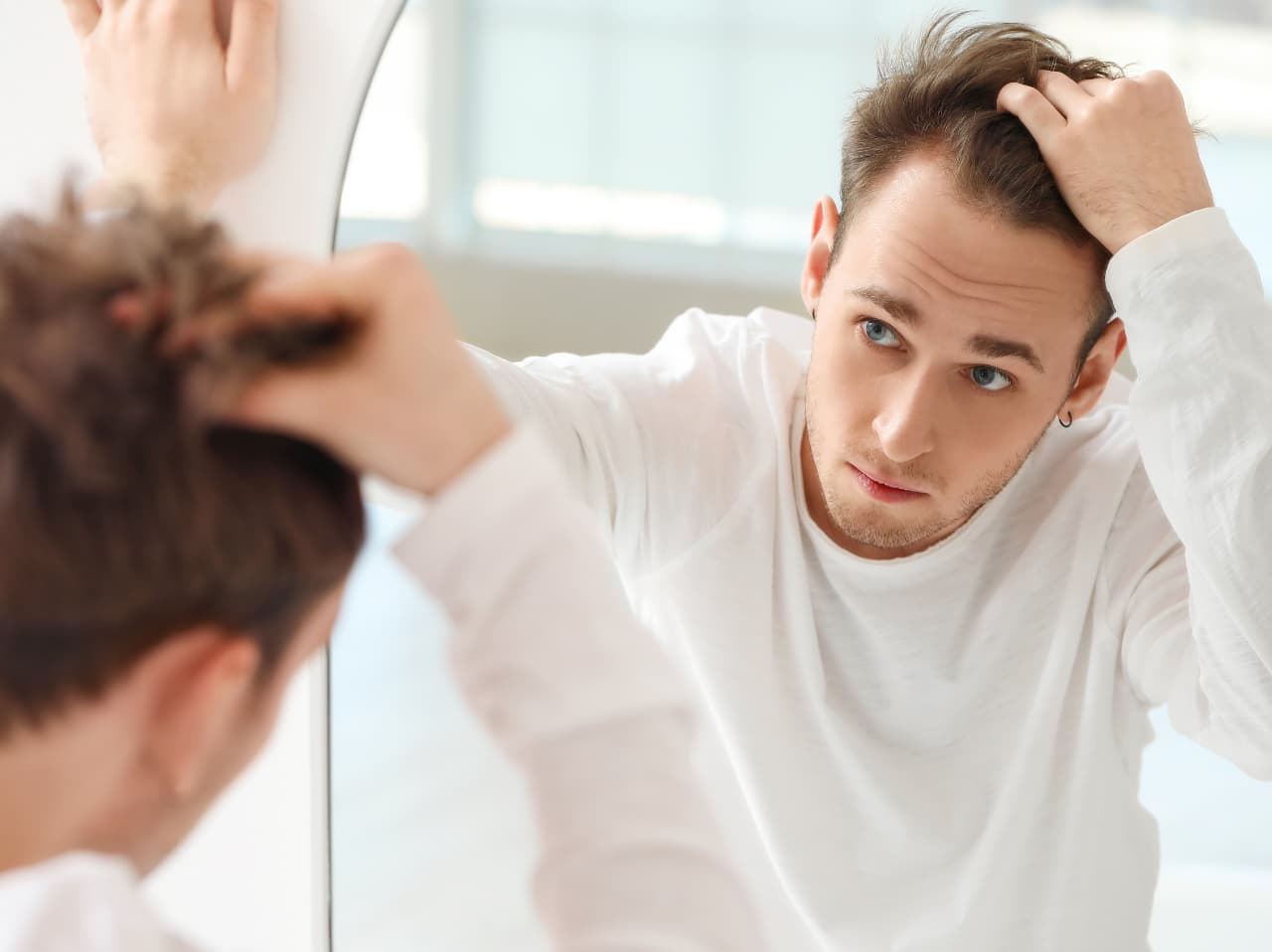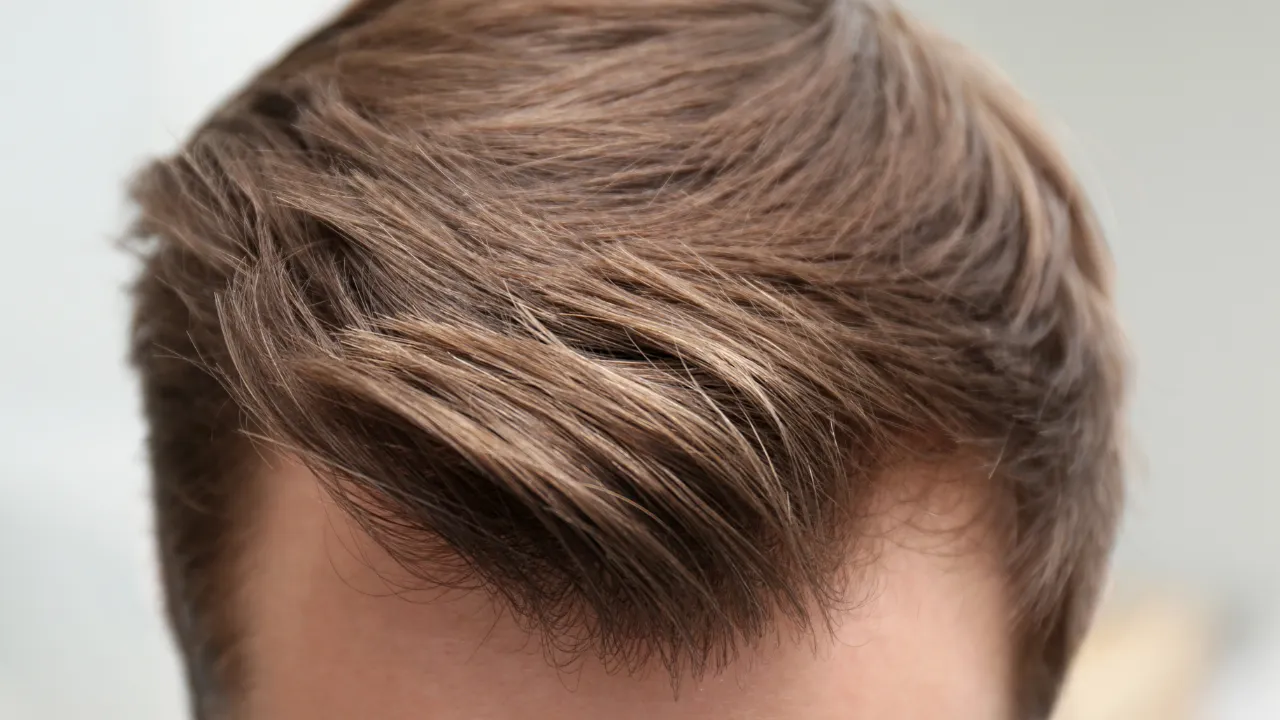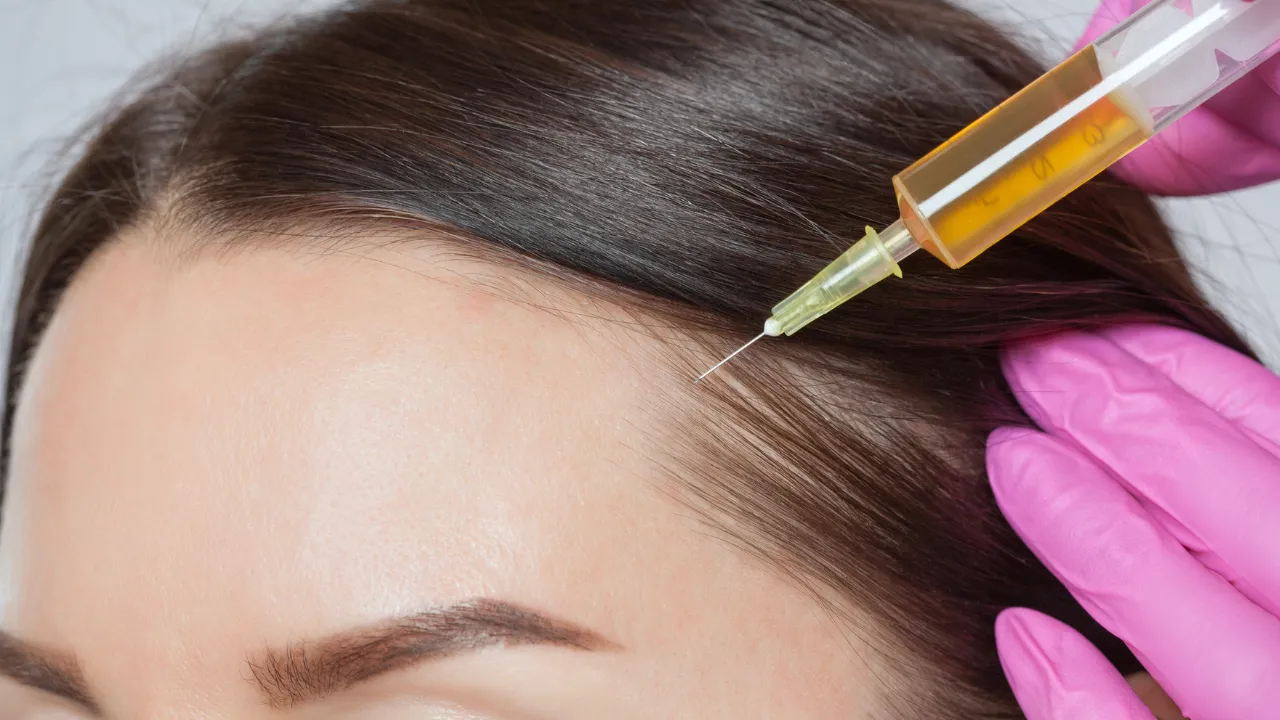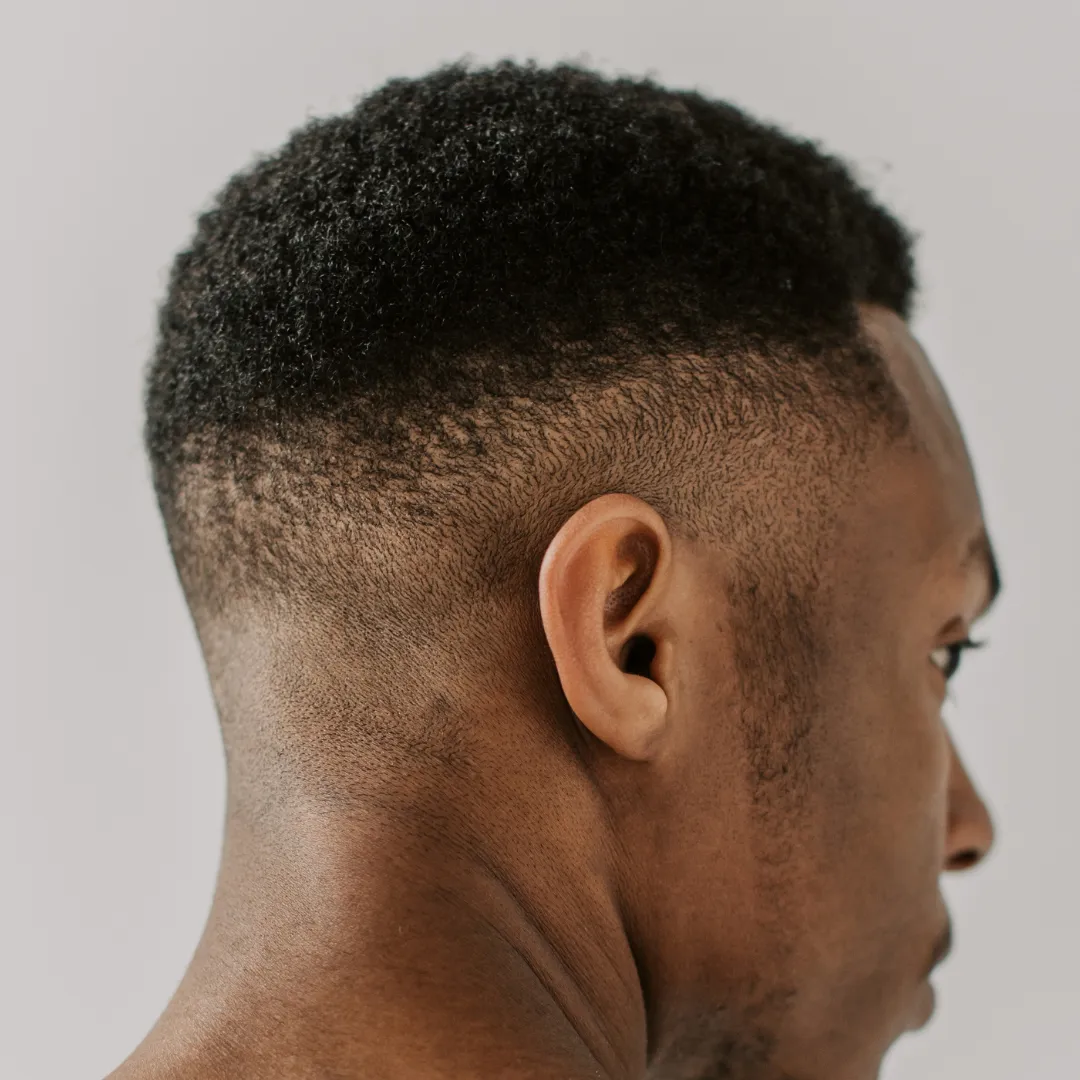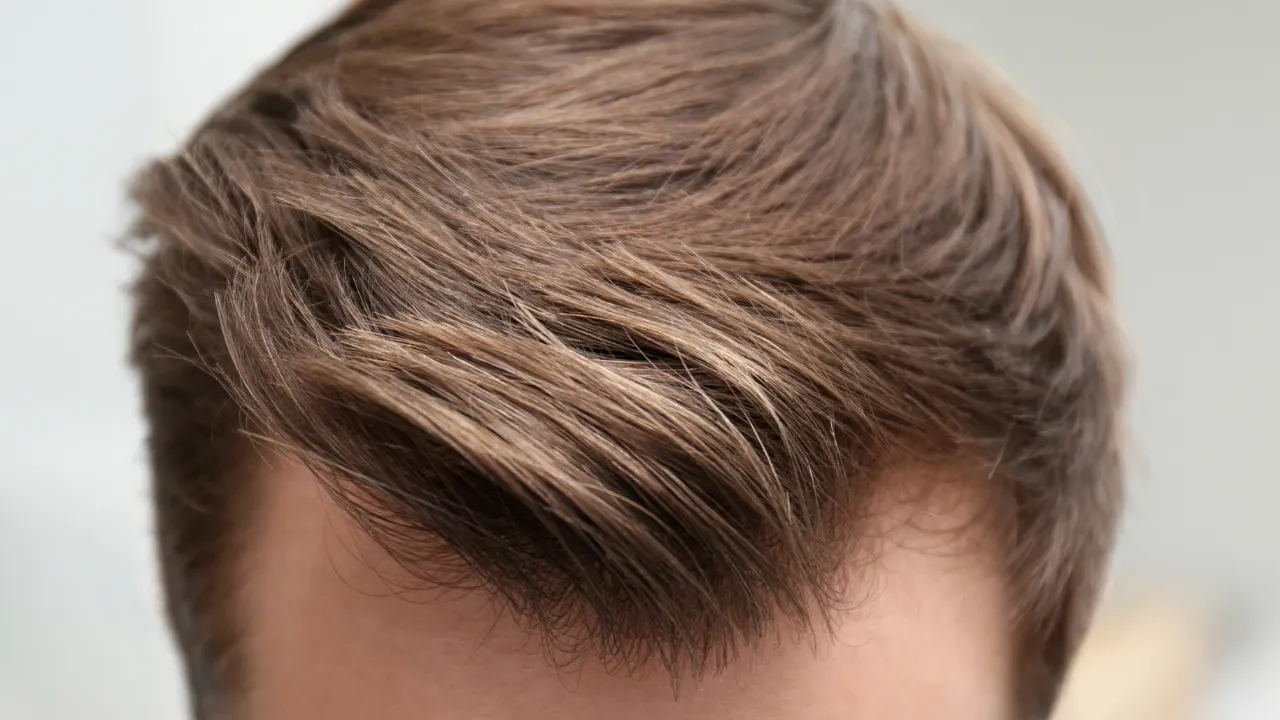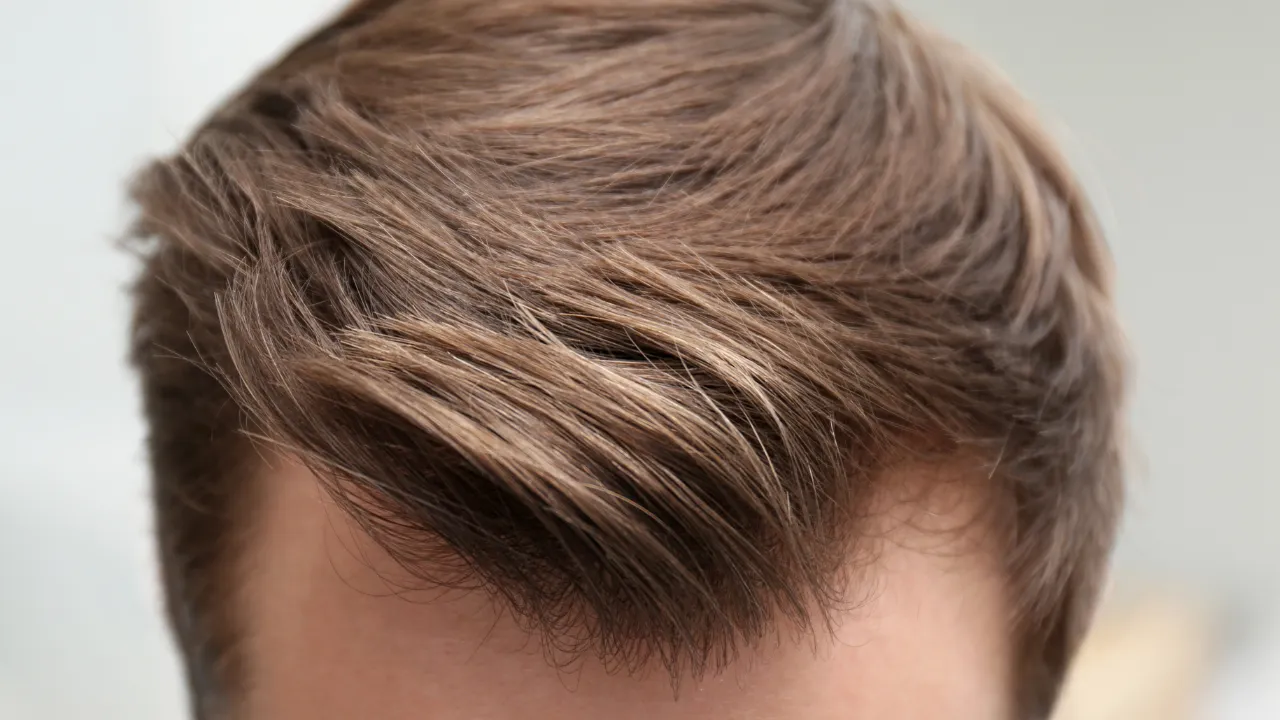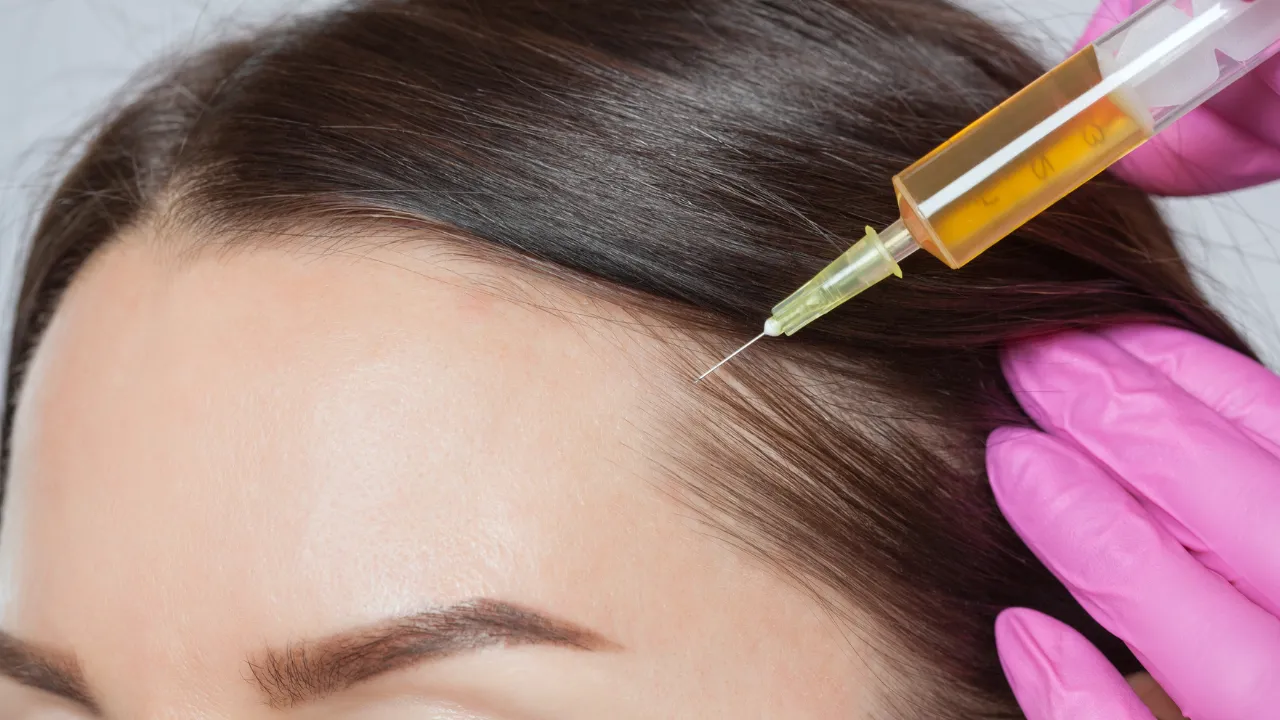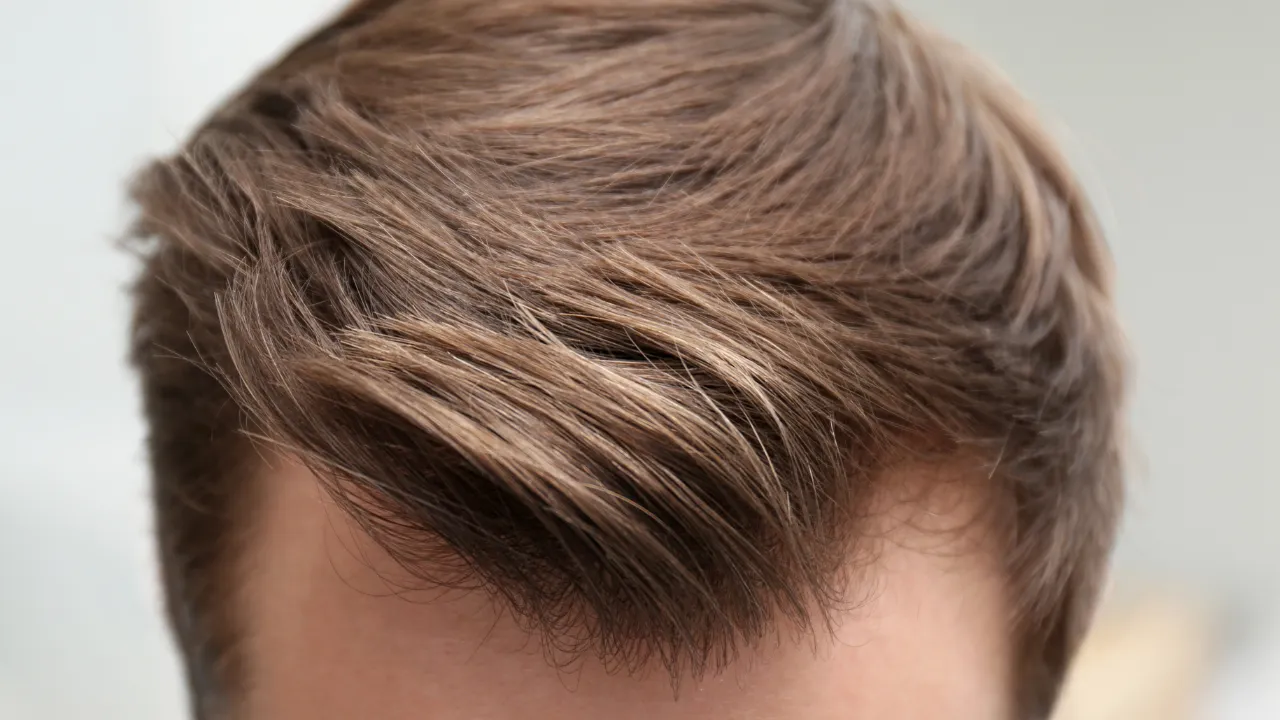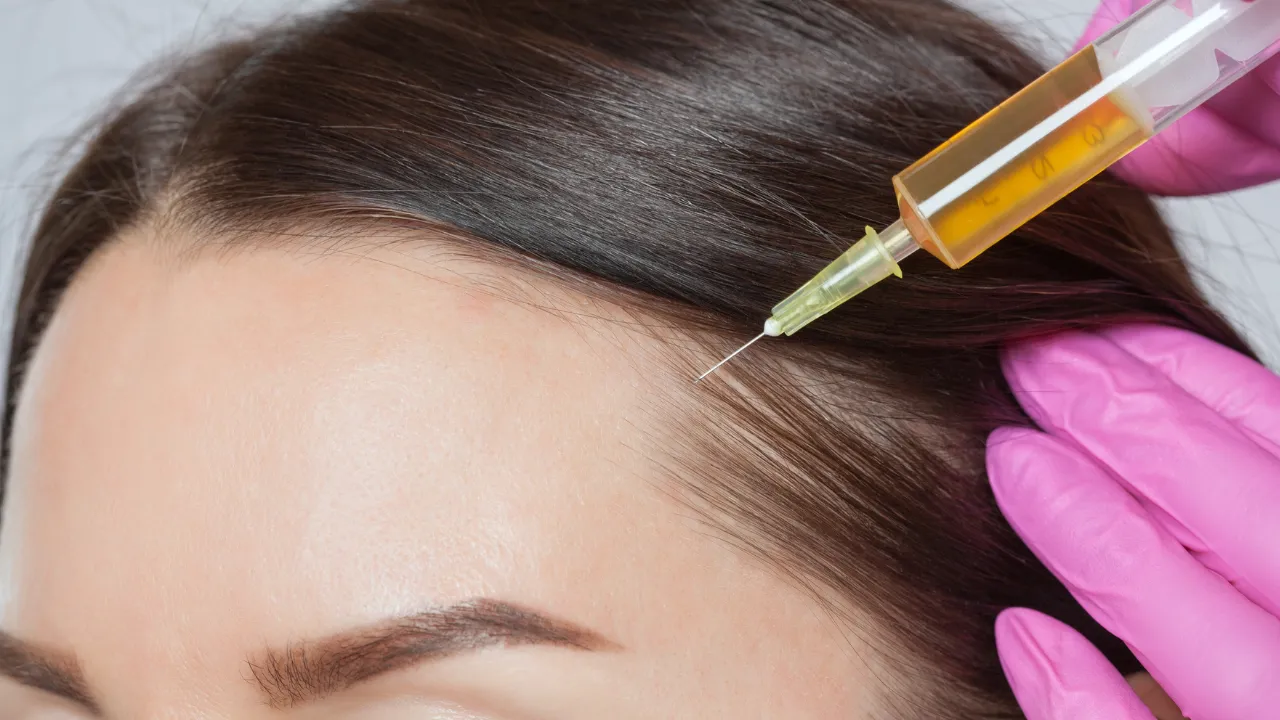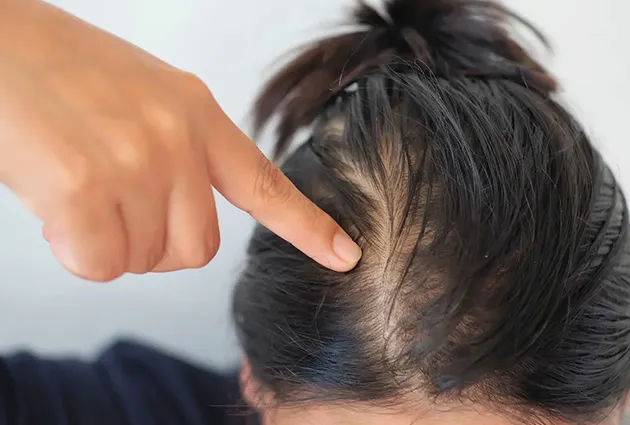Table of Contents
ToggleA receding hairline in women can be distressing and often misunderstood. At Kopelman Hair, we understand the unique challenges women face with hair line loss. Our team, led by Dr. Kopelman, offers tailored solutions backed by decades of experience to help restore confidence and promote hairline regrowth.
What Causes a Female Receding Hairline?
Hormones, Genetics, and Health Conditions
Many women experience a hair line receding due to hormonal shifts. Estrogen and progesterone fluctuations can thin the hairline, especially during menopause or after pregnancy. Genetic predisposition also plays a role; if female relatives experienced similar hair receding, the likelihood increases. Autoimmune conditions or thyroid issues can also contribute to balding hairline symptoms.
PCOS, Menopause, and Age-Related Changes
Polycystic ovary syndrome (PCOS) can disrupt hormone levels and trigger hair thinning in women, particularly at the hairline. Menopause often causes a drop in estrogen, leading to a more visible female receding hairline. Even women in their 20s and 30s may notice early signs due to stress, birth control, or genetics.
Styling Habits and External Stressors
Tight hairstyles, chemical treatments, and frequent heat styling can strain hair follicles. Over time, this causes a thinning hairline in women.Traction alopecia, caused by constant tension on the scalp, is a common styling-related reason for balding hairline issues. These external stressors speed up hairline receding, especially with fragile or overprocessed strands.
Could a Receding Hairline Signal an Underlying Health Problem?
Sometimes, hairline thinning is a symptom, not the root problem. Conditions to rule out:
- Thyroid dysfunction – Often causes diffuse or frontal thinning
- PCOS – Can trigger hormonal imbalances and male-pattern hairline loss
- Autoimmune issues – Like alopecia areata or lupus
- Nutrient deficiencies – Especially iron, protein, or vitamin D
Doctors may recommend blood tests to identify underlying conditions contributing to hair loss. If you notice other symptoms like fatigue, weight changes, or irregular periods, it’s important to get a full medical checkup. At Kopelman Hair, we coordinate with your healthcare team when necessary to ensure safe, effective care.
Types of Hair Loss in Women
Hair loss can take different forms, and understanding these patterns helps determine the best treatment options. The most common types of hair loss include:
- Female pattern hair loss – Gradual thinning, especially at the crown and hairline
- Telogen effluvium – Sudden shedding due to stress, illness, or hormonal changes
- Traction alopecia – Caused by tension from hairstyles that pull on the scalp
- Alopecia areata – An autoimmune disorder that causes patchy hair loss
Identifying the correct type helps guide an effective hair loss treatment strategy.
Signs and Patterns of Hairline Hair Loss in Women
Thinning at the Temples
One early sign of a women receding hairline is loss near the temples, forming an M-shape or uneven hair line. Early detection is key to preventing further loss.
Differences from Male Hair Loss
Unlike male pattern baldness, which usually starts at the crown, female hair loss is more diffuse. The hairline may remain intact for some, but in other cases, it gradually recedes, especially at the sides. Women rarely go completely bald but may experience a broader part or visible scalp. Some women also experience female pattern baldness, which presents differently than male-pattern loss.
Does Hairline Loss Vary by Hair Type or Ethnicity?
Yes, hair texture and ethnicity can influence how hairline thinning shows up.
- Women with fine or straight hair may notice visible thinning sooner.
- Women with curly or textured hair may experience breakage near the hairline that mimics recession.
- African, Latinx, or South Asian women may face unique risks due to styling practices like tight braids, relaxers, or straightening.
Understanding your hair type can help your provider recommend the best treatments and styling strategies.
Receding Hairline in Your 20s and 30s
Younger women can also face hairline issues. Hormonal imbalances, lifestyle choices such as smoking, lack of sleep, and poor diet can also affect your hairline. For example, smoking weed may contribute to hair loss due to its impact on hormones, stress, and nutrient absorption, resulting in triggering early-stage hair loss. Awareness and early action can slow or reverse the process. In some cases, a naturally high women hairline may be mistaken for hair loss, but both conditions can be addressed with personalized treatment strategies.
How to Treat a Receding Hairline in Women
Medical and Professional Options
At Kopelman Hair, we offer proven medical treatments including minoxidil, finasteride (off-label for women), and platelet-rich plasma (PRP) therapy. PRP stimulates the scalp and supports natural hairline regrowth in women. In advanced cases, hair transplant surgery may be an option.
For many patients, a hair transplant offers the most permanent correction of a thinning or receding hairline. If you’re curious about pricing and what affects it, see our detailed guide on female hair transplant cost.
Every hair loss treatment plan is tailored to the individual’s specific needs. While results vary, most treatments are designed to stimulate hair growth and strengthen follicles over time. Some medications may carry side effects, so professional guidance is essential.
Natural Remedies and At-Home Care
Some women prefer non-invasive options. Scalp massage, essential oils such as rosemary or peppermint, and over-the-counter serums can help support blood flow and reduce inflammation. Balanced nutrition also plays a role.
How to Fix Receding Hairline Female Naturally
Natural methods include reducing stress, improving sleep, and avoiding tight hairstyles. Supplements containing biotin, iron, and vitamin D may help improve hair strength. While results vary, consistency is key.
Supplements That Support Hairline Recovery
A healthy diet supports hair growth, but some women may require additional support from supplements. The proper nutrients help strengthen hair from the root and support regrowth.
Key supplements that may help:
- Biotin – Supports keratin production, often recommended for hair thinning
- Vitamin D – Deficiency is common and can slow hair growth
- Iron – Especially for women with low ferritin or heavy menstrual cycles
- Zinc and selenium – Help reduce scalp inflammation
Always consult your doctor before starting supplements, especially if you’re managing conditions like PCOS or thyroid disorders.
How Long Does It Take to Regrow a Receding Hairline?
Hair regrowth isn’t instant. It depends on the cause, the method of treatment, and how early you start.
Typical regrowth timelines:
- Topical treatments like minoxidil – 3 to 6 months for visible changes
- PRP therapy – Some patients notice improvement within 2–3 sessions
- Hair transplant surgery – Results begin around 4–6 months, with full density in 9–12 months
- Natural remedies and supplements – Results may take longer and vary widely
Consistency is key. The earlier you act, the better your chances of seeing a healthy hairline recovery.
How to Regrow Hairline Female
Start early, protect your hair line, and use targeted treatments. Stress management, gentle care, and nutrient support all play a role in regrowing a receding hair line. Topical applications, PRP, and stress management can all contribute to gradual regrowth. Monitoring how your hair grows over time helps track progress.
How to Stop a Receding Hairline in Women
Stopping a receding hairline involves a mix of prevention and active care. Avoid styles that stress the scalp, nourish your body with the proper nutrients, and seek medical support early. Consistency and customized care plans are key.
Can a Female Receding Hairline Be Fixed?
Yes, many cases of female receding hairline are reversible, especially when addressed early. A tailored plan from an experienced provider like Dr. Kopelman improves outcomes and helps patients regain healthy growth and confidence.
Haircuts and Hairstyles for Receding Hairlines
Haircut Ideas for Better Coverage
Choosing the right cut can improve the look of thinning areas. Consider these:
- Pixie cut with side fringe
- Bob with volume layers
- Curtain bangs
- Layered styles and side parts can help frame the face and conceal a receding hairline. A skilled stylist can personalize the look for your needs.
Styling Tips for Confidence
Avoid styles that pull tightly on the hairline. Instead, opt for gentle updos or loose waves. Lightweight volumizing products can add fullness. When in doubt, consult a professional familiar with ladies receding hairline styling.
When to Seek Professional Help
Early Warning Signs
If you notice more shedding than usual, a widening part, or a higher forehead, consult a specialist. These may be early signs of a female receding hairline. Early diagnosis leads to better treatment outcomes.
What to Expect from a Hair Loss Consultation
At Kopelman Hair, your consultation includes a scalp evaluation, health history, and customized plan. Dr. Kopelman combines medical insight with cosmetic precision to deliver results tailored to each woman’s needs.
This article is written to support women seeking clarity and solutions. If you or someone you know is struggling with a receding hairline in women, trust Kopelman Hair for personalized, expert care.


